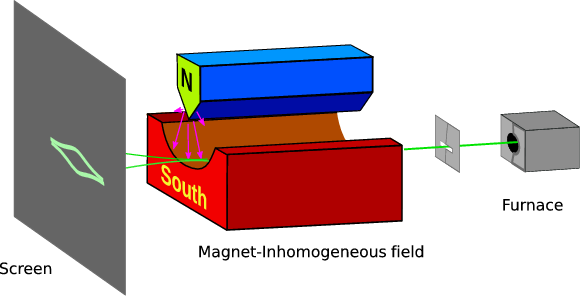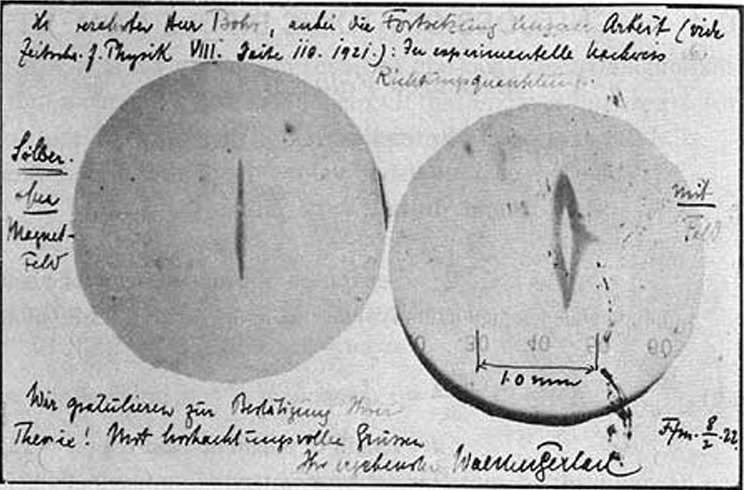To be used in future
Prev Section 4.5: Coupling of light to atoms and nuclei: multipole couplings
Up Chapter 4: Charged Particles and Electromagnetic Fields
Section 4.7: The Pauli-Schrödinger equation Next
4.6 Internal degrees of freedom: spin
Up to this stage we have not looked at internal degrees of freedom, but from the famous Stern-Gerlach experiment↓ (particles with spin
in a magnetic field), see Figs. 4.2↓,4.3↓, we know that the internal spin degree of freedom interacts in interesting ways with the magnetic field.

Figure 4.2 A sketch of the Stern-Gerlach apparatus. The asymmetric choice of magnets gives the slight structure seen in Fig.4.3↓.
The effect can be described in an ad-hoc way by assuming that the spin degree of freedom (an angular momentum with magnitude
) is aligned by the magnetic field,. This is described by adding a term
to the Hamiltonian. Here we have used the empirical value of the Bohr magneton↓,
which we will derive now from first principles.


